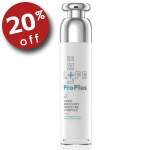|
Skin Info Advanced Skin Technology Ageless Secret Ahava Amino Genesis Aromatherapy Associates B Kamins Babor Benir Beauty Billion Dollar Brows Bioelements Blinc Bryght Cellcosmet Cellex-C Cellular Skin Rx Coola Cosmedix Dermalogica Dermasuri DeVita Dr Dennis Gross Dr Hauschka Dr Renaud EmerginC Eminence Organics Fake Bake Furlesse Gehwol GlyMed Plus Go Smile Green Cream HydroPeptide Institut Esthederm IS Clinical Jan Marini Juice Beauty KaplanMD Karin Herzog Kimberly Sayer Lifeline Luzern M.A.D Skincare Mary Cohr Mavala Neurotris NuFace Obagi Olaplex Orlane Osea Osmotics Payot PCA Skin® Personal MicroDerm Peter Thomas Roth Pevonia pH Advantage Phyto Phyto-C Phytomer Priori Pro-Derm PSF Pure Skin Formulations RejudiCare Synergy Revision Skincare RevitaLash Rosebud Shira Silver Miracles Sjal Skeyndor Skin Biology Sothys St. Tropez StriVectin Suki Sundari Swissline Tend Skin Thalgo Tweezerman Valmont Vie Collection Virtue Vivier Yonka Yu-Be --Discontinued
Departments |
|
|
|||||||||




 Today's random forum topics
Today's random forum topics
 What our customers are saying
What our customers are saying